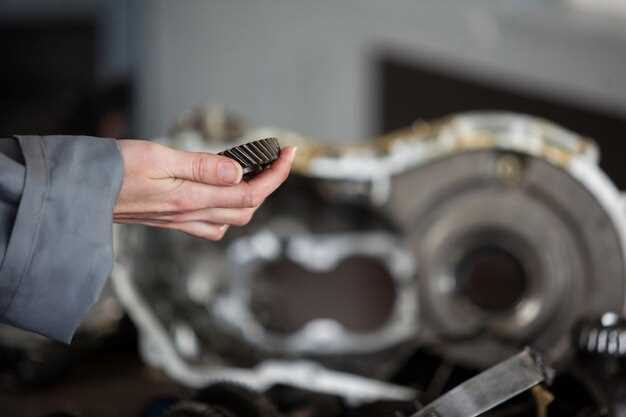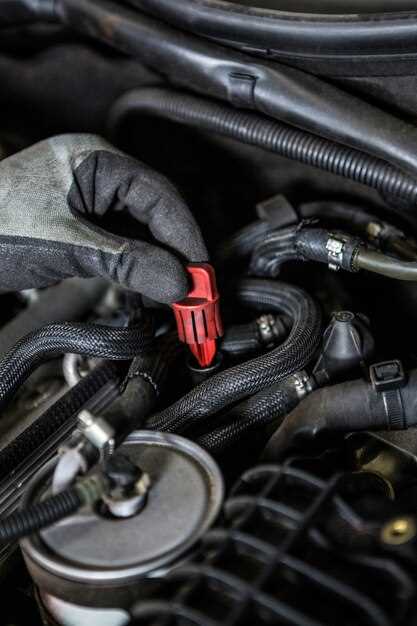
The performance of the Audi brand is well-known for its powerful engines, and at the heart of this performance lies the turbocharger. Turbochargers are critical components that enhance engine efficiency, providing increased power and responsiveness while optimizing fuel consumption. However, like any mechanical component, turbochargers are subjected to wear and tear, making regular maintenance and effective repair crucial for their longevity and optimal performance.
Understanding the intricacies of turbocharger functionality is essential for both enthusiasts and professionals alike. Turbochargers operate by forcing more air into the engine’s combustion chamber, which allows for a more efficient burn of fuel. This process generates higher power output and improves overall engine performance. However, the complex nature of turbochargers means that they can encounter a range of issues, from oil leaks to compressor wheel damage. To mitigate these problems, a proactive approach to maintenance is necessary.
Maintaining audi turbochargers requires a combination of regular inspections, proper lubrication, and timely interventions when issues arise. By understanding the signs of wear and following best practices for care and repair, owners can keep their turbochargers working efficiently. This article will explore essential tips and techniques for maintaining and repairing Audi turbochargers effectively, helping to ensure sustained performance and reliability for your vehicle.
Identifying Common Turbocharger Issues in Audi Models

Turbochargers are crucial components in Audi models, enhancing engine performance and efficiency. However, they can experience several issues that may affect overall vehicle operation. Recognizing these problems early is vital to prevent extensive damage and costly repairs.
One common issue is excessive oil consumption. This can occur when oil leaks into the turbocharger, often due to worn seals or damaged bearings. Symptoms include blue smoke from the exhaust and a noticeable decrease in engine performance. Regular checks of oil levels and the appearance of smoke can help identify this problem promptly.
Another prevalent concern involves boost pressure loss. This can result from leaks in the intake system, including the intercooler or hoses. Drivers might notice a lack of acceleration or power, accompanied by a hissing sound. Inspecting the entire intake system for cracks or loose connections can detect any leaks that may compromise boost pressure.
Overheating is also a significant issue. Insufficient lubrication or cooling can lead to a turbocharger overheating, resulting in potential failure. Signs include a burning smell and extreme heat from the exhaust. Ensuring that the oil is at the appropriate level and that the cooling system is functioning correctly is essential for preventing overheating.
Lastly, foreign object damage (FOD) can occur if debris enters the turbine housing. This often leads to blade damage, which can severely impact performance. Unusual noises such as whirring or grinding can indicate blade damage. Regular inspections of the air intake system and ensuring proper filters are in place can help mitigate this risk.
By being aware of these common turbocharger issues in Audi models, owners can take proactive measures to address them, thus ensuring optimal performance and longevity of their vehicles.
Step-by-Step Guide to Turbocharger Maintenance for Audi Vehicles

Maintaining the turbocharger of your Audi vehicle is essential to ensure its optimal performance and longevity. Follow these steps to effectively maintain your turbocharger.
Step 1: Regular Visual Inspections
Begin by performing visual inspections of the turbocharger and surrounding components. Look for signs of oil leaks, smoke from the exhaust, or any unusual noises. Check for loose or damaged hoses and connections that could impact performance.
Step 2: Change Engine Oil and Filter
Turbochargers rely on clean engine oil for lubrication. Regularly change your engine oil and filter according to your manufacturer’s recommended schedule. Using high-quality synthetic oil can enhance performance and reduce carbon buildup.
Step 3: Monitor Boost Pressure
Install a boost gauge to monitor the turbocharger’s performance. Maintain proper boost pressure levels, as fluctuations can indicate issues like wastegate failure, intake leaks, or exhaust blockages. Immediate diagnosis and repair are crucial for turbo health.
Step 4: Clean the Air Filter
A clogged air filter restricts airflow to the turbocharger, reducing efficiency. Check and clean or replace the air filter regularly to ensure the turbocharger receives an adequate amount of clean air.
Step 5: Exhaust System Maintenance
Inspect the exhaust system for leaks, blockages, and damage. Ensure it is clear of debris and have it serviced as necessary. A well-maintained exhaust system supports proper turbo operation and prevents back pressure issues.
Step 6: Inspect the Intercooler and Piping
Ensure that the intercooler and associated piping are free from leaks and blockages. Any loss of pressure can affect turbo performance. Clean and repair as needed, ensuring all connections are secure.
Step 7: Turbocharger Cleaning
Consider periodic cleaning of the turbocharger itself. This may involve removing it from the vehicle for a more thorough cleaning. Use proper cleaning products designed for turbochargers to remove carbon deposits and ensure smooth operation.
Step 8: Professional Inspection
Schedule regular inspections with a qualified mechanic who specializes in turbocharger systems. A professional can diagnose hidden issues that may not be visible during a casual inspection.
Step 9: Addressing Performance Issues
If you notice decreased power or responsiveness, investigate immediately. Common issues include wastegate failure, boost leaks, or a failing turbocharger. Prompt attention can prevent more extensive damage.
Step 10: Follow Manufacturer Recommendations
Always adhere to the manufacturer’s maintenance guidelines and recommendations specific to your Audi model. Maintaining regular service intervals and addressing issues promptly will greatly enhance the lifespan of your turbocharger.
Tools and Techniques for Turbocharger Repair in Audi Engines
Repairing turbochargers in Audi engines requires specific tools and techniques to ensure optimal performance and durability. Below are essential tools and proven methods used in turbocharger repair.
Diagnostic Tools: Begin with a comprehensive diagnostic tool. A quality OBD-II scanner can identify fault codes related to turbo performance issues. Pressure gauges and boost controllers can help monitor the turbo’s operational status and pinpoint specific problems.
Disassembly Tools: Using precision tools is critical. An impact wrench and a set of sockets with various sizes help disassemble the turbocharger. Additionally, a torque wrench is essential for reassembly to maintain correct torque specs.
Cleaning Equipment: Turbochargers often accumulate oil deposits and carbon buildup. A parts washer or ultrasonic cleaner effectively removes these contaminants. Ensure that you use non-corrosive cleaning agents to avoid damaging sensitive components.
Inspection Instruments: Use a caliper for measuring tolerances and a magnifying glass for examining wear on components like the turbine and compressor blades. Identifying tiny fractures or wear patterns is crucial for successful repairs.
Replacement Parts: Verify the quality of replacement parts. OEM (Original Equipment Manufacturer) parts are recommended for reliability. Use a turbo rebuild kit that contains seals, bearings, and gaskets tailored for Audi turbochargers.
Assembly Techniques: During the reassembly of the turbocharger, it is imperative to apply the proper torque to prevent leakage. Additionally, use high-temperature thread sealant on bolts to ensure a secure fit. Following the manufacturer’s service manual for specific assembly procedures will help avoid common pitfalls.
Testing Post-Repair: Once repairs are complete, conduct a thorough test run. Monitoring boost levels and exhaust emissions ensures that the turbocharger operates efficiently. A road test can help detect any potential issues that may arise during operation.
Utilizing the correct tools and methods for turbocharger repair is vital for maintaining the performance of Audi engines. Properly executed repairs can significantly enhance the longevity and efficiency of turbocharged systems.




